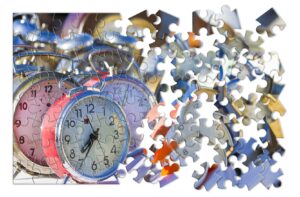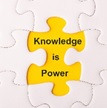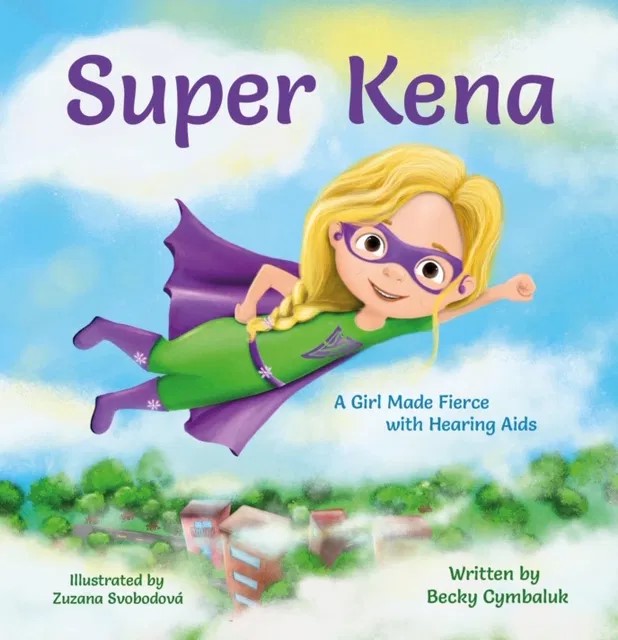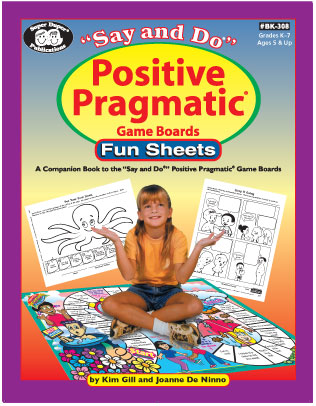Related Products
For Parents
Related Teacher Tools Takeout Items
Surface Learning is Not Enough – the Need for Deeper Understanding

In most classrooms, new information is presented in a lecture format supplemented by reading material, until students build surface knowledge of the topic. Interaction activities such as classroom discussion, small group work, and partner problem-solving are used to solidify surface knowledge and to move students to a deeper level of understanding1. Therefore, how well students are able to converse in the classroom setting truly impacts their move toward deeper understanding and learning at the expected pace.
|
It is faulty to assume that: (1) a student will ‘catch up’ once they enter school, |
On the way to deeper understanding: For students with hearing loss, keeping pace in moving to a deeper level of understanding can be very challenging. Background, or world knowledge is necessary to build surface level understanding of a specific topic. Prior knowledge is an excellent predictor of performance. Our students tend to have ‘Swiss cheese language’ with unpredictable knowledge gaps in vocabulary and concepts. They also are often limited in the number of language attributes they use to describe objects or concepts, further contributing to their gaps and limited world knowledge. Imagine learning about the conquistadors if you lacked knowledge of geography, discoveries of early explorers, and that there are different countries and they may desire different things.
 Filling the gaps. Due to prior knowledge deficits we can expect that surface learning will take longer for students with hearing loss than their typically hearing peers. Students who have a less complete understanding of surface level information are not going to benefit to the same degree, or at the same rate, during interactive peer activities that are meant to move them to deeper understanding. “Closing the language gaps” is not something that is a nice extra touch to provide to our students if there is a teacher of the deaf/hard of hearing available – it is a necessary accommodation for equal access to learning.
Filling the gaps. Due to prior knowledge deficits we can expect that surface learning will take longer for students with hearing loss than their typically hearing peers. Students who have a less complete understanding of surface level information are not going to benefit to the same degree, or at the same rate, during interactive peer activities that are meant to move them to deeper understanding. “Closing the language gaps” is not something that is a nice extra touch to provide to our students if there is a teacher of the deaf/hard of hearing available – it is a necessary accommodation for equal access to learning.
| Filling in the gaps in prior knowledge is necessary if a child is to be able to develop the surface learning needed prior to developing deeper understanding. Without this surface learning, a deeper understanding similar to that of class peers is not possible. |
Added to typical knowledge deficits is the reality that reduced precision listening ability caused by hearing loss very often delays literacy skill development and slows reading fluency. Teaching vocabulary, when the student does not have sufficient phonological awareness skills, will not develop the reading fluency needed for comprehension, especially in the secondary grades.
 Conversational inequalities. Research2 has indicated that during one-on-one conversations in a quiet setting, students with hearing loss have conversational skills equivalent to their hearing peers. This includes skills for initiating a conversation, maintaining a dialogue over several turns, shifting the topic, and terminating the conversation. In a typical mainstream classroom, there are many choices for communication partners along with background noise, reverberation, and listening at distances beyond 3 feet. These conditions all interfere with speech perception of students who are hard of hearing.
Conversational inequalities. Research2 has indicated that during one-on-one conversations in a quiet setting, students with hearing loss have conversational skills equivalent to their hearing peers. This includes skills for initiating a conversation, maintaining a dialogue over several turns, shifting the topic, and terminating the conversation. In a typical mainstream classroom, there are many choices for communication partners along with background noise, reverberation, and listening at distances beyond 3 feet. These conditions all interfere with speech perception of students who are hard of hearing.
Students with hearing loss make 25% fewer overall communication attempts than their hearing peers. They also often seem unaware that their peers had tried to initiate conversation and do not attempt to maintain a conversation. When they attempt to maintain a conversation, they generally use one-to-two-word phrases to maintain communication and do not add new information.
| A teacher repeating key information from class discussions cannot ‘level the playing field’ for our students. |
Students with hearing loss frequently try to maintain the conversation by bringing up a topic that is unrelated to the conversation. In other words, they are not aware enough of the content of the conversation to contribute information, so they bring up a new topic. Thus, when classroom activities move to peer interaction as a way to facilitate deeper understanding it is often very challenging for students with hearing loss to participate successfully. As can be inferred by the research, in quiet settings performance in conversation equal peers. Therefore, it is the unequal acoustic access in the classroom that results in conversational challenges for students who are hard of hearing. This provides a powerful argument for the use of hearing assistance technology that will improve perception of peer voices in 1:1 or group settings.
| Moving to a quieter area for discussion will not ensure full participation by the student with hearing loss. Including him or her in a group that sticks to the topic will heighten the value of the activity for the learner with hearing loss and improve the deepening of understanding. |
Challenges repairing communication breakdowns. Another aspect of conversation relates to what a person does when they do not fully understand what another person has said. One study3 found that persons with hearing loss have difficulty when a shift in topic is made during conversation. The more predictable the conversation, the fewer the likelihood of communication breakdowns. If a student is sitting with a group of peers who maintain their focus on the problem-solving task, the level of understanding is likely much higher than if the student was in a group who wandered off topic repeatedly. The teacher needs to be aware of this issue when pairing our students with different partners or groups.
 Keeping up in the classroom is a challenge for children with hearing loss due to access issues that interfere with understanding conversational communication and the gaps in knowledge resulting from decreased auditory access since infancy (or sign communication with limited language models since infancy). Filling the gaps of vocabulary and phonological awareness is necessary for students to keep up with class expectations for developing surface learning. Access to classroom discussion and for all group activities is necessary for
Keeping up in the classroom is a challenge for children with hearing loss due to access issues that interfere with understanding conversational communication and the gaps in knowledge resulting from decreased auditory access since infancy (or sign communication with limited language models since infancy). Filling the gaps of vocabulary and phonological awareness is necessary for students to keep up with class expectations for developing surface learning. Access to classroom discussion and for all group activities is necessary for
deep learning to occur. Providing the appropriate access technology is a necessity if we are to allow deeper learning to occur within the classroom. Selecting appropriate group partners and honing communication repair skills is also critical to achieving at the same rate and to the same level as peers.
References:
- 1. Fisher, Frey, Hattie (2016) Visible Learning for Literacy Grades K12: Implementing the Practices that Work Best to Accelerate Student Learning. Corwin/SAGE, Thousand Oaks, California
- 2. Duncan (2001). Conversational skills of children with hearing loss and children with normal hearing in an integrated setting. The Volta Review, 101(4), 193211.
- 3. Caissie (2002). Conversational topic shifting and its effect on communication breakdowns for individuals with hearing loss. TheVolta Review, 102(2), 4556
Some products to check out related to this topic:
- Cracking the Grammar Code (download the free assessment guide!)
- Evidence-Based Practice in Educating Deaf and Hard-of-Hearing Students
- Latin and Greek Roots
- Phonological Awareness Chipper Chat
- SCRIPT – Student Communication Repair Inventory & Practical Training 2nd Ed
- Promoting Language & Literacy in Children who are Deaf or Hard of Hearing
- Language Strategies for Little Ones



